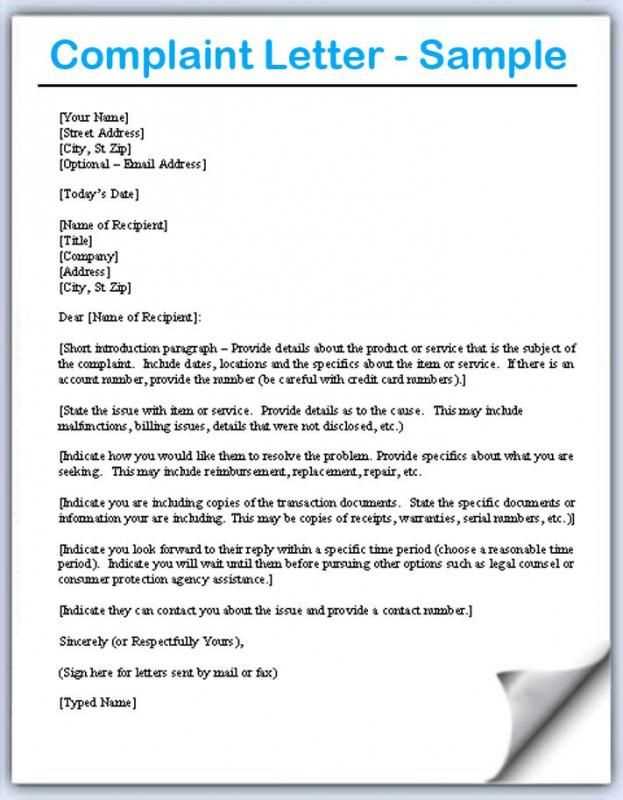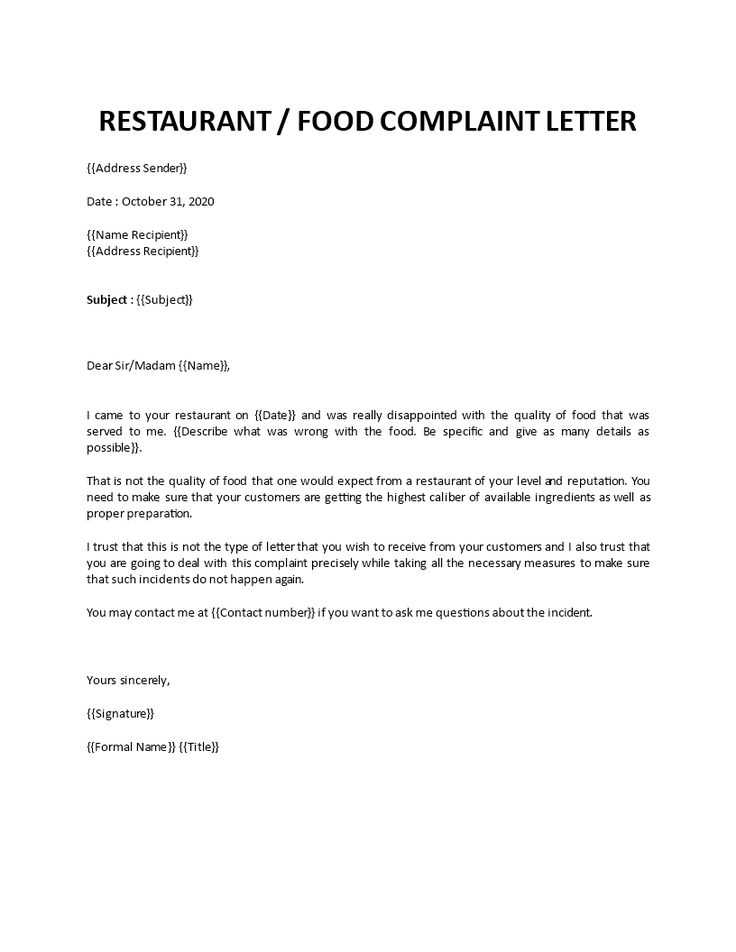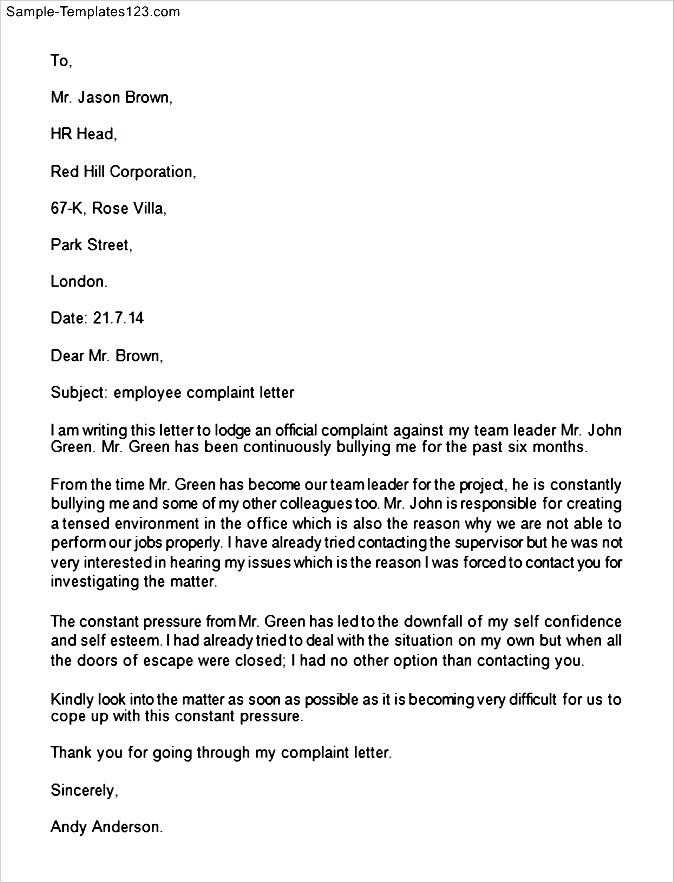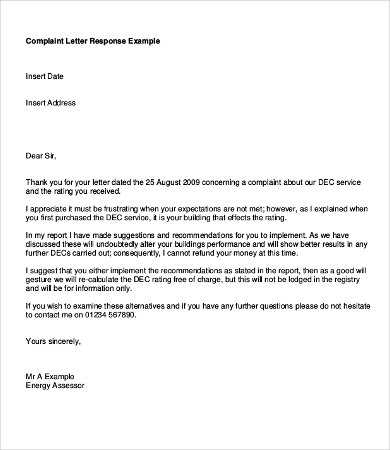Letter of Complaint to Bank Template

When facing challenges with a financial service provider, it is important to express concerns clearly and professionally. A well-structured message can help resolve issues efficiently and ensure your voice is heard. Understanding the key elements of crafting such a communication is essential for effective outcomes.
Properly addressing the situation involves outlining the problem in a concise yet detailed manner. Focusing on facts and providing necessary supporting information ensures that the issue is understood, which increases the chances of a timely response.
Politeness and clarity are crucial in maintaining a constructive tone. While it is natural to feel frustrated, approaching the situation with respect can lead to better results. Whether it’s a service error or an unresolved inquiry, knowing how to present your case can significantly influence the resolution process.
How to Write a Bank Complaint Letter
When you need to address an issue with a financial institution, presenting your concerns clearly is key to achieving a positive resolution. A well-written communication is a powerful tool in ensuring that your message is taken seriously and acted upon quickly.
Start by including your personal information, such as account details or identification numbers, to help the recipient easily locate your records. Then, describe the problem you are facing with specific details, providing enough context for the institution to understand the issue clearly.
It’s important to stay concise and factual. Avoid using emotional language or vague descriptions. By being direct and to the point, you increase the chances of your request being processed swiftly and accurately.
Finally, always include a request for a resolution and set a reasonable timeline for a response. Politeness and professionalism should remain at the forefront of your message to maintain a constructive dialogue throughout the process.
Understanding the Importance of Complaint Letters

Expressing dissatisfaction or concerns through written communication is an essential step in resolving issues with service providers. It serves as a formal method for customers to communicate their problems and seek appropriate solutions. The act of writing provides clarity and documentation, which can be crucial in achieving a satisfactory resolution.
By putting your concerns in writing, you create a clear record that can be referenced throughout the process. This documentation helps ensure that your case is taken seriously and that all relevant details are considered. It also sets a professional tone for the conversation, making it easier for both parties to address the matter constructively.
In many cases, written communication is necessary to escalate issues when verbal conversations do not lead to a solution. By sending a detailed and structured message, you increase the likelihood of receiving timely and effective support, ultimately helping to restore your trust in the service provider.
Key Components of a Complaint Letter
When addressing issues with a service provider, certain elements are crucial for ensuring that your message is both clear and actionable. A well-structured message includes key details that help the recipient understand the nature of the problem and how it can be resolved. These components play a significant role in effectively communicating your concerns.
Essential Information
To ensure that your request is handled promptly, provide necessary identification and account details, such as account numbers or reference codes. This allows the recipient to easily locate your records and investigate the matter efficiently.
Clear Description of the Issue
Explain the problem concisely but thoroughly. Include dates, specific events, and any relevant documentation to give a complete picture of what occurred. The more precise you are, the easier it is for the institution to understand and address the issue.
| Component | Description |
|---|---|
| Identification Details | Include account numbers, reference codes, or any other identifiers to help locate your records quickly. |
| Problem Description | Clearly describe the issue with all relevant facts, dates, and supporting documents. |
| Resolution Request | Clearly state what action or solution you are seeking to resolve the issue. |
| Professional Tone | Maintain a polite and respectful tone throughout your message. |
Effective Ways to Address Your Issue
When encountering problems with a service provider, it is essential to approach the situation strategically. A thoughtful and structured approach increases the chances of resolving the issue in a timely and satisfactory manner. By focusing on clear communication, providing accurate details, and maintaining a professional tone, you can effectively present your case.
Prepare Your Information

Before reaching out, gather all necessary details to make your case clear and organized. This helps the recipient address the issue more efficiently.
- Collect relevant documents, such as receipts, statements, or any correspondence that supports your claim.
- Make sure to have all necessary account or transaction details readily available for easy reference.
- Write down a summary of the events leading up to the problem for a clear understanding.
Follow the Right Channels
Using the appropriate communication channels ensures that your issue is directed to the right department and handled in the best possible way.
- Start by reaching out to customer service or the relevant department directly.
- If initial attempts do not lead to a resolution, consider escalating the issue to a supervisor or manager.
- For unresolved matters, explore formal channels such as regulatory bodies or ombudsman services if necessary.
Tips for Clear and Polite Communication

When expressing concerns or issues with a service provider, the way you communicate plays a significant role in the outcome. A well-crafted message, with a clear structure and respectful tone, increases the likelihood of a positive and swift response. Clear communication fosters understanding, while politeness ensures that the dialogue remains productive and professional.
To achieve effective communication, focus on the following principles:
- Be Direct: State the issue clearly and avoid unnecessary details. Keeping the message focused ensures it is easy to follow.
- Use Respectful Language: Maintain a polite and respectful tone throughout, even when discussing frustrating situations. This approach encourages a helpful response.
- Stay Professional: Avoid using emotional language. Focus on the facts and present your points calmly and logically.
- Be Concise: Keep your message brief and to the point. This makes it easier for the recipient to understand and act on your concerns quickly.
Common Mistakes to Avoid in Complaints

When addressing issues with a service provider, it’s essential to avoid common mistakes that can hinder the resolution process. These errors often lead to confusion, delay, or an unproductive outcome. By understanding what to avoid, you can ensure your message is received in the most effective manner possible.
Using Emotional Language: While it’s natural to feel frustrated, expressing anger or frustration can derail the conversation. Stay calm and stick to the facts to keep the focus on resolving the issue.
Being Vague or Overly Detailed: Providing too little information makes it difficult for the recipient to understand the problem, while too many irrelevant details can distract from the main issue. Aim for a balanced, clear explanation.
Ignoring Proper Structure: A poorly structured message can confuse the recipient and delay action. Ensure that your communication is well-organized, with a clear introduction, description of the issue, and a request for resolution.
Failing to Include Key Information: Missing essential details such as account numbers, dates, or reference codes can slow down the process. Always provide the necessary information to help resolve the issue quickly.
By avoiding these mistakes, you can improve the effectiveness of your communication and increase the likelihood of a swift and satisfactory resolution.